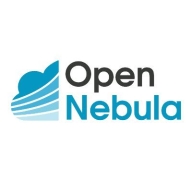


Juniper AppFormix and OpenNebula are competitors in the cloud orchestration and management sector. Juniper AppFormix shows a competitive edge with real-time performance monitoring and automation, while OpenNebula leads with open-source flexibility and strong VM management.
Features: Juniper AppFormix provides advanced telemetry, analytics, and automation features, allowing for detailed insights and efficient resource management. OpenNebula excels in comprehensive VM management and hybrid cloud support, beneficial for environments needing flexibility and scalability. Juniper's focus on automation and performance monitoring distinctly contrasts with OpenNebula's robust VM orchestration and hybrid cloud capabilities.
Ease of Deployment and Customer Service: OpenNebula is known for its easy deployment and strong open-source community support, making it suitable for organizations with limited resources or those requiring significant customization. Juniper AppFormix has more complex setup processes and demands ongoing management, balanced by dedicated support services. The differing deployment models aim at different audiences; OpenNebula favors simplicity and adaptability, while Juniper targets enterprises needing high-level support.
Pricing and ROI: Juniper AppFormix typically incurs higher setup costs due to its rich features and enterprise support but offers substantial ROI through automation efficiency. OpenNebula has lower initial costs and provides excellent ROI for businesses leveraging its open-source nature to reduce ongoing expenses. These products have distinct pricing strategies; Juniper appeals to those prioritizing advanced automation, and OpenNebula attracts budget-conscious companies seeking flexible pricing models.



IBM Turbonomic offers automation, planning, and right-sizing recommendations to streamline resource management, improve efficiencies, and optimize costs across virtualized environments and cloud platforms.
IBM Turbonomic is valued for its capability to optimize resource allocation and monitor virtual environments efficiently. It facilitates automated decision-making in VM sizing, load balancing, and cost optimization for both on-premises and cloud deployments. Users can leverage insights for workload placement, ensure peak performance assurance, and effectively right-size across VMware and Azure. The ongoing transition to HTML5 aims to improve visual and navigational ease, while expanded reporting features are anticipated. Opportunities for improved training, documentation, and integrations enhance platform usability and functionality.
What Are the Key Features?In finance, IBM Turbonomic aids in maintaining platform efficiency during market fluctuations. Healthcare organizations leverage its capability for resource optimization during high-demand periods to enhance patient care support. Retailers use it for planning in peak seasons, ensuring resources align with fluctuating demand to maintain performance continuity.
AppFormix is an optimization and management software platform for public, private and hybrid clouds. This intent-driven software manages automated operations, visibility, and reporting in cloud and Network Functions Virtualization (NFV) use cases for Kubernetes and OpenStack, as well as Amazon Web Services. It features machine learning-based policy and smart monitors, application and software-defined infrastructure analytics, alarms, and chargeback accounting.
OpenNebula provides the most simple but feature-rich and flexible solution for the comprehensive management of virtualized data centers to enable private, public and hybrid IaaS clouds. OpenNebula interoperability makes cloud an evolution by leveraging existing IT assets, protecting your investments, and avoiding vendor lock-in.
OpenNebula is a turnkey enterprise-ready solution that includes all the features needed to provide an on-premises (private) cloud offering, and to offer public cloud services.
We monitor all Cloud Management reviews to prevent fraudulent reviews and keep review quality high. We do not post reviews by company employees or direct competitors. We validate each review for authenticity via cross-reference with LinkedIn, and personal follow-up with the reviewer when necessary.